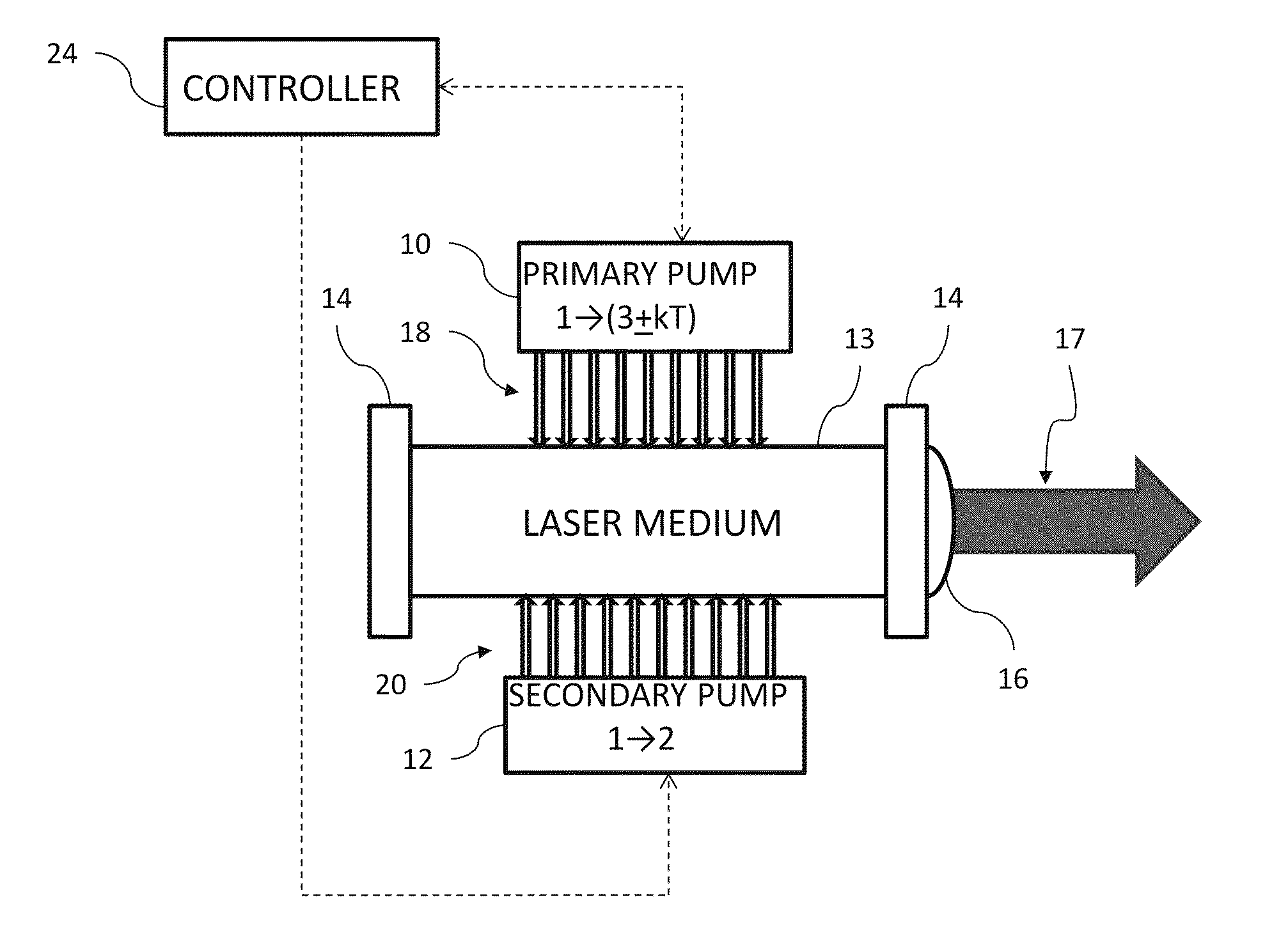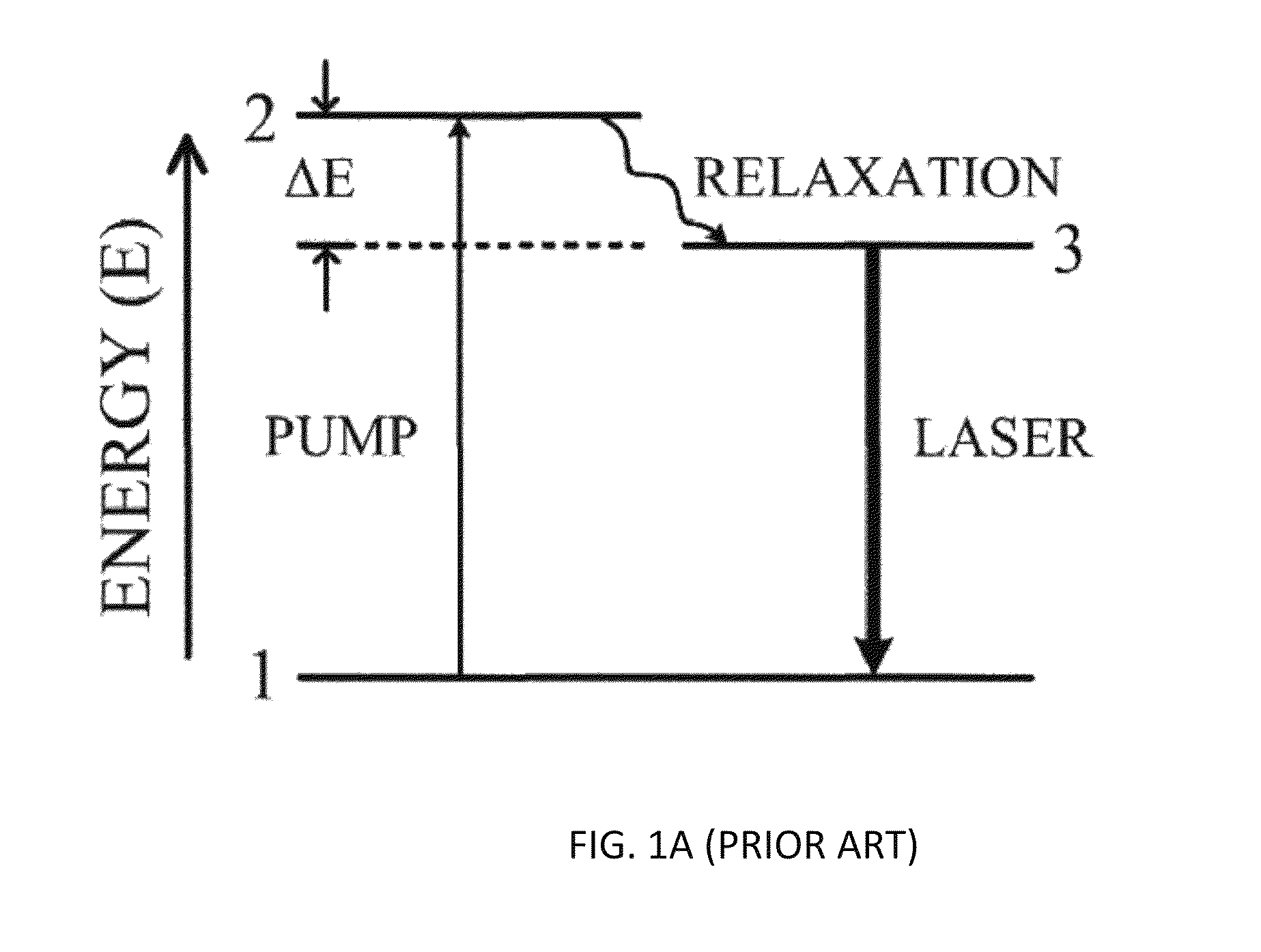Dual channel pumping method laser with metal vapor and noble gas medium
a pumping method and laser technology, applied in the field of lasers, can solve the problems of low quantum efficiency, inefficient relaxation of level 2, and inability to populate the upper laser level directly from the lower laser level, and achieve the effect of less energy
- Summary
- Abstract
- Description
- Claims
- Application Information
AI Technical Summary
Benefits of technology
Problems solved by technology
Method used
Image
Examples
Embodiment Construction
[0027]A method of the invention is a laser pumping method. In the laser pumping method of the invention, a primary pump populates an intermediate level that is near (measured by thermal energy) of the upper laser level (Level 3 in FIGS. 1 and 2). The primary pump preferably delivers a large majority of the total pump power to an intermediate level that lies within a few kT (where kT is the thermal energy) of the laser level. A secondary pump pumps significantly less power to a level (a level from which a fast transition occurs to the laser level—Level 2 in FIGS. 1 and 2) that is an excited level above the upper laser level (corresponding to a conventional highly excited level).
[0028]The invention directs most power toward pumping to the intermediate level that exists near the upper laser level (within a few kT) in a laser medium that supports the intermediate level. In methods of the invention, most of the available pump power is devoted to driving a two level system, but a second w...
PUM
 Login to View More
Login to View More Abstract
Description
Claims
Application Information
 Login to View More
Login to View More - R&D
- Intellectual Property
- Life Sciences
- Materials
- Tech Scout
- Unparalleled Data Quality
- Higher Quality Content
- 60% Fewer Hallucinations
Browse by: Latest US Patents, China's latest patents, Technical Efficacy Thesaurus, Application Domain, Technology Topic, Popular Technical Reports.
© 2025 PatSnap. All rights reserved.Legal|Privacy policy|Modern Slavery Act Transparency Statement|Sitemap|About US| Contact US: help@patsnap.com



